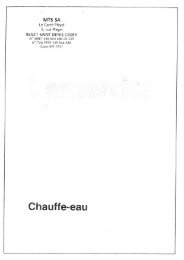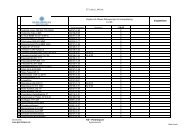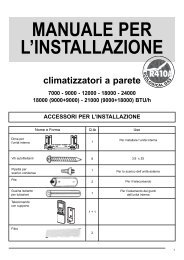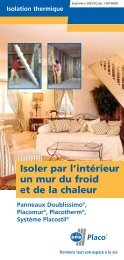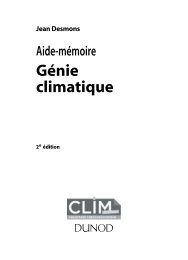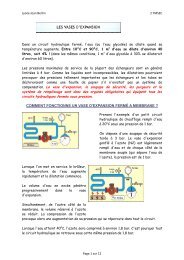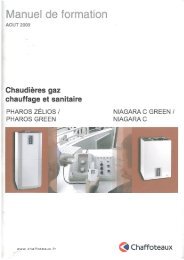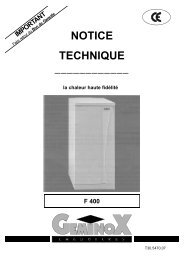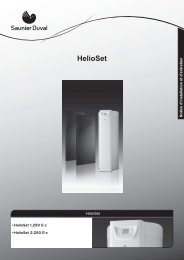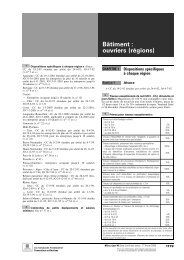Dimplex_LIH 22-26TE 3-sprachig D-GB-F.book - enrdd.com
Dimplex_LIH 22-26TE 3-sprachig D-GB-F.book - enrdd.com
Dimplex_LIH 22-26TE 3-sprachig D-GB-F.book - enrdd.com
Create successful ePaper yourself
Turn your PDF publications into a flip-book with our unique Google optimized e-Paper software.
4<br />
4 Transport<br />
5 Set-up<br />
English<br />
ATTENTION!<br />
When transporting the heat pump, ensure that it is not tilted more than<br />
45° (in any direction).<br />
Use a wooden pallet for transporting the heat pump to the final installation<br />
location. The basic device can be transported with a lift<br />
truck, hand truck or by means of 3/4" pipes fed through the holes<br />
in the base plate or frame.<br />
5.1 General Information<br />
The unit must be installed indoors on a level, smooth and horizontal<br />
surface. The entire base of the frame should lie directly on<br />
the floor to ensure a good soundproof seal. If this is not the case,<br />
additional sound insulation measures may be necessary. If the<br />
device is installed on top of a built-under buffer tank, a surface<br />
that fully supports the base is required. The heat pump must be<br />
installed so that maintenance work can be carried out without<br />
hindrance. This can be ensured by maintaining a clearance of 1<br />
m in front and to the left and right of the heat pump.<br />
<br />
<br />
<br />
ATTENTION!<br />
The heat pump and transport pallet are only joined by the packing film.<br />
Before using the transport holes in the frame, it is necessary to<br />
remove the lower side panel assemblies. This is done by loosening<br />
each of the two screws at the base and then withdrawing the<br />
panels by unhooking them from above. Rehang the panels by<br />
gently pushing them in an upwards direction.<br />
Be careful not to damage any <strong>com</strong>ponents when inserting the<br />
pipes through the frame.<br />
<br />
Never install the device in rooms subject to high humidity. Condensation<br />
can form on the heat pump and air circuit if the humidity<br />
exceeds 50% and the external temperature is below O °C.<br />
If the heat pump is installed on an upper storey, the load-bearing<br />
capacity of the ceiling should be checked. On account of the<br />
acoustics, measures for isolating possible vibrations should also<br />
be very carefully planned in advance as well. Installation on a<br />
wooden floor is not re<strong>com</strong>mended.<br />
5.2 Condensed Water Pipe<br />
<br />
<br />
<br />
<br />
Opening the cover<br />
<br />
<br />
<br />
<br />
Closing the cover<br />
Condensed water that forms during operation must be drained<br />
off frost-free. The heat pump must be mounted on a level plane<br />
to guarantee proper drainage. The condensed water pipe must<br />
have a minimum diameter of 50 mm and should be fed frost-free<br />
into a sewer. Condensate should not be discharged directly into<br />
clearing tanks and cesspits because the aggressive vapours<br />
could destroy the evaporator.<br />
5.3 Sound<br />
To prevent solid-borne sound from being transmitted to the heating<br />
system, we re<strong>com</strong>mend connecting the heat pump to the<br />
heating system using a flexible hose.<br />
Installed air ducts should be sound-isolated from the heat pump<br />
to prevent the transmission of solid-borne sound to the ducts.<br />
E-4



